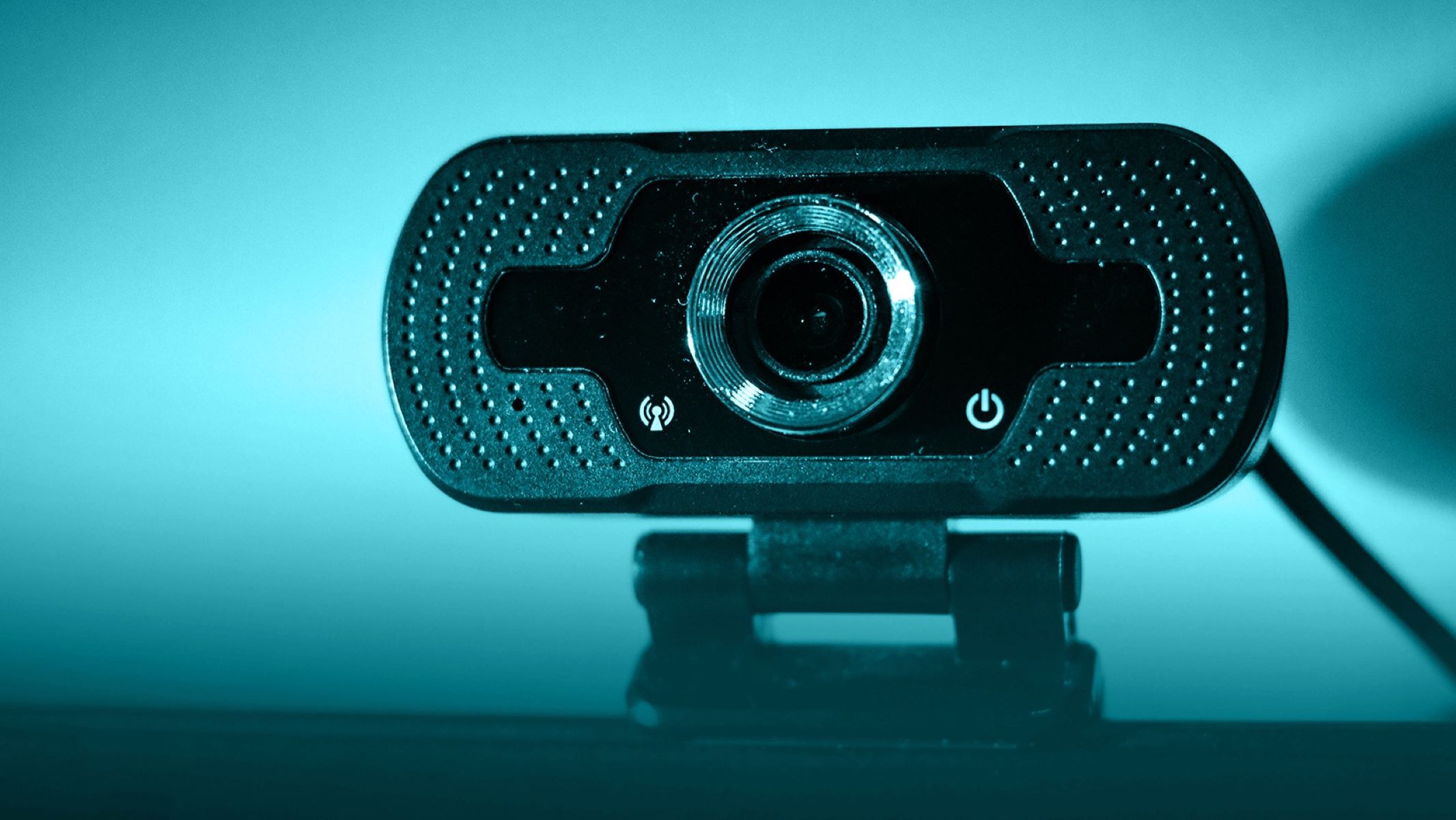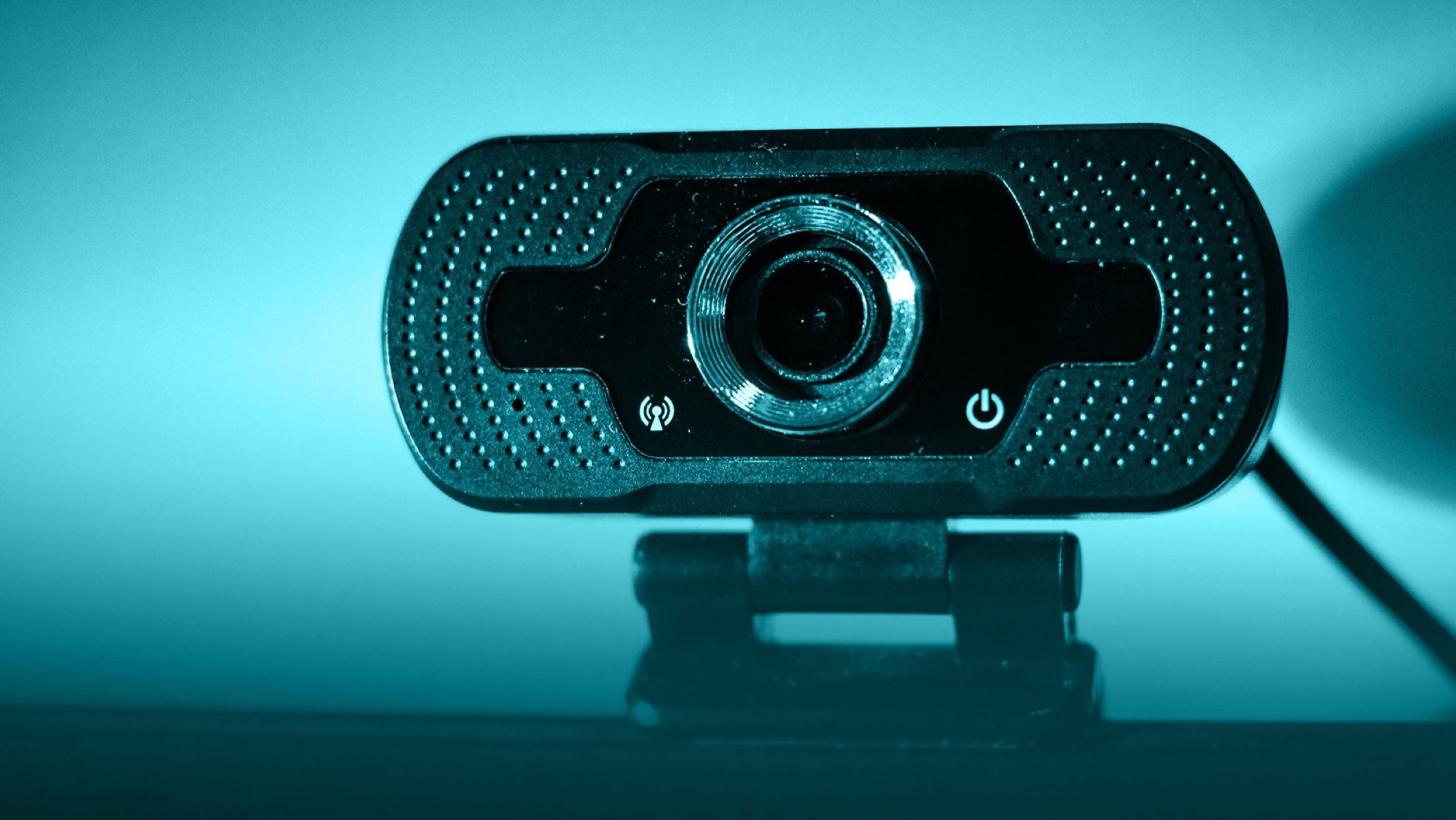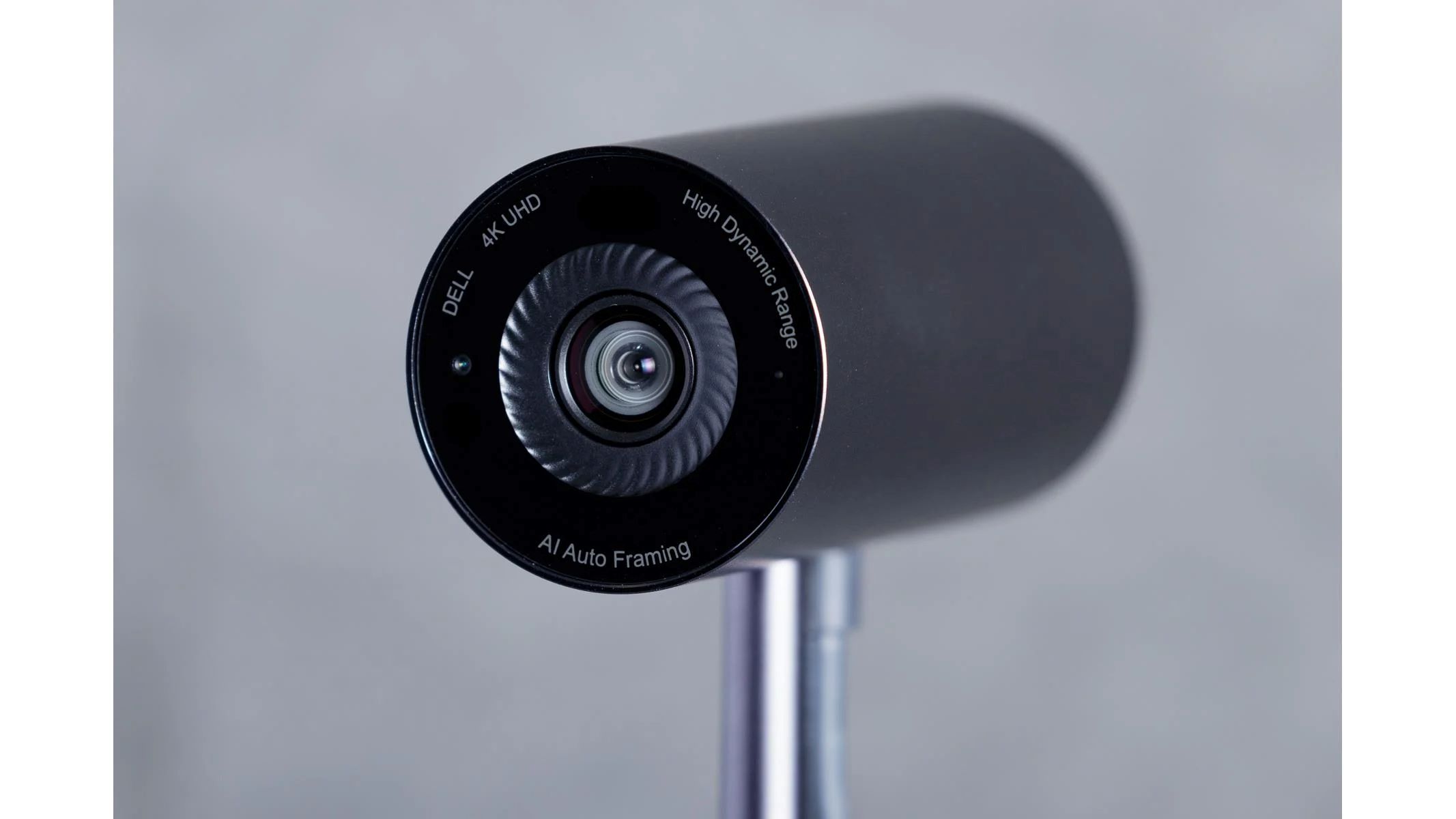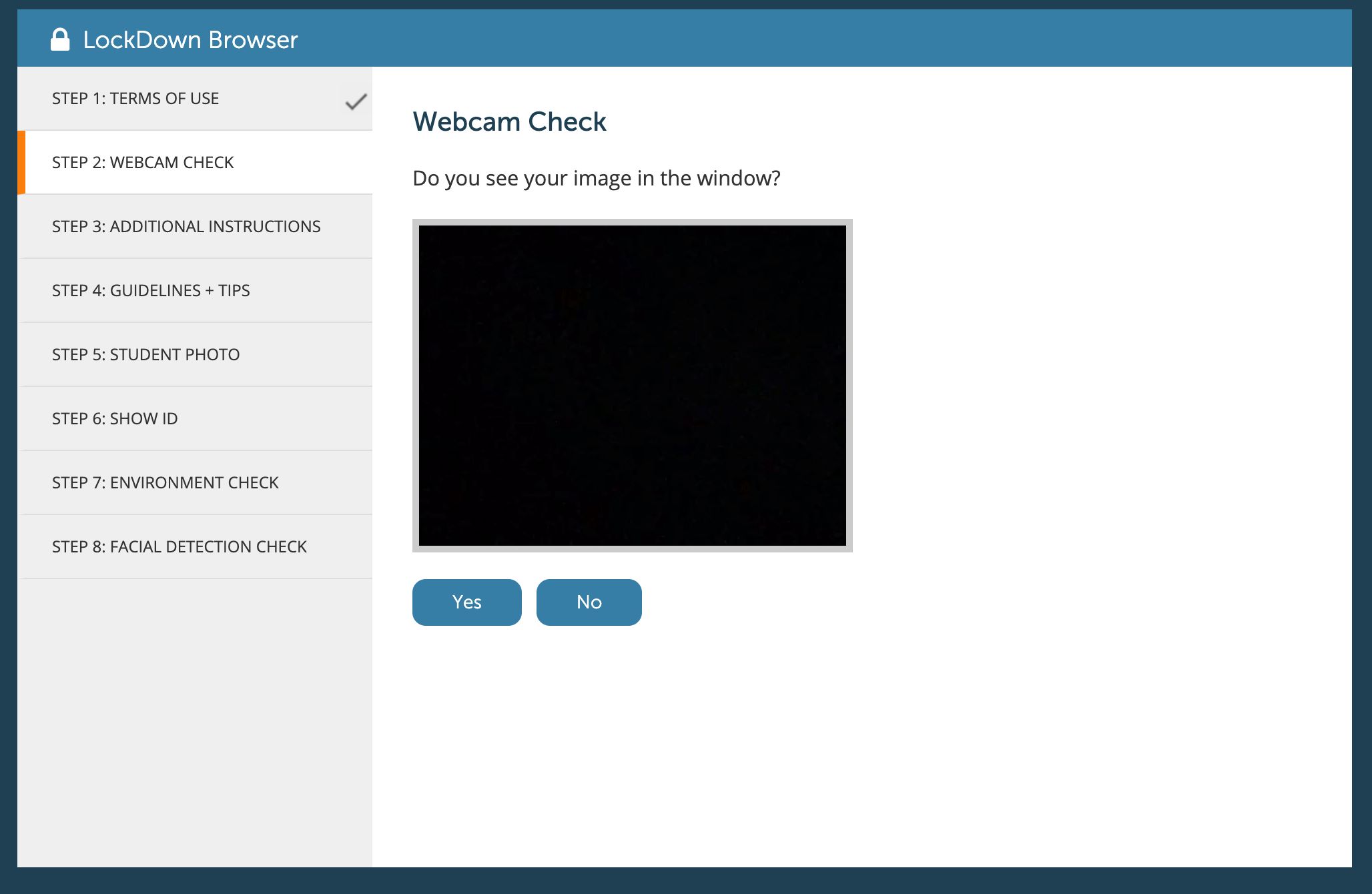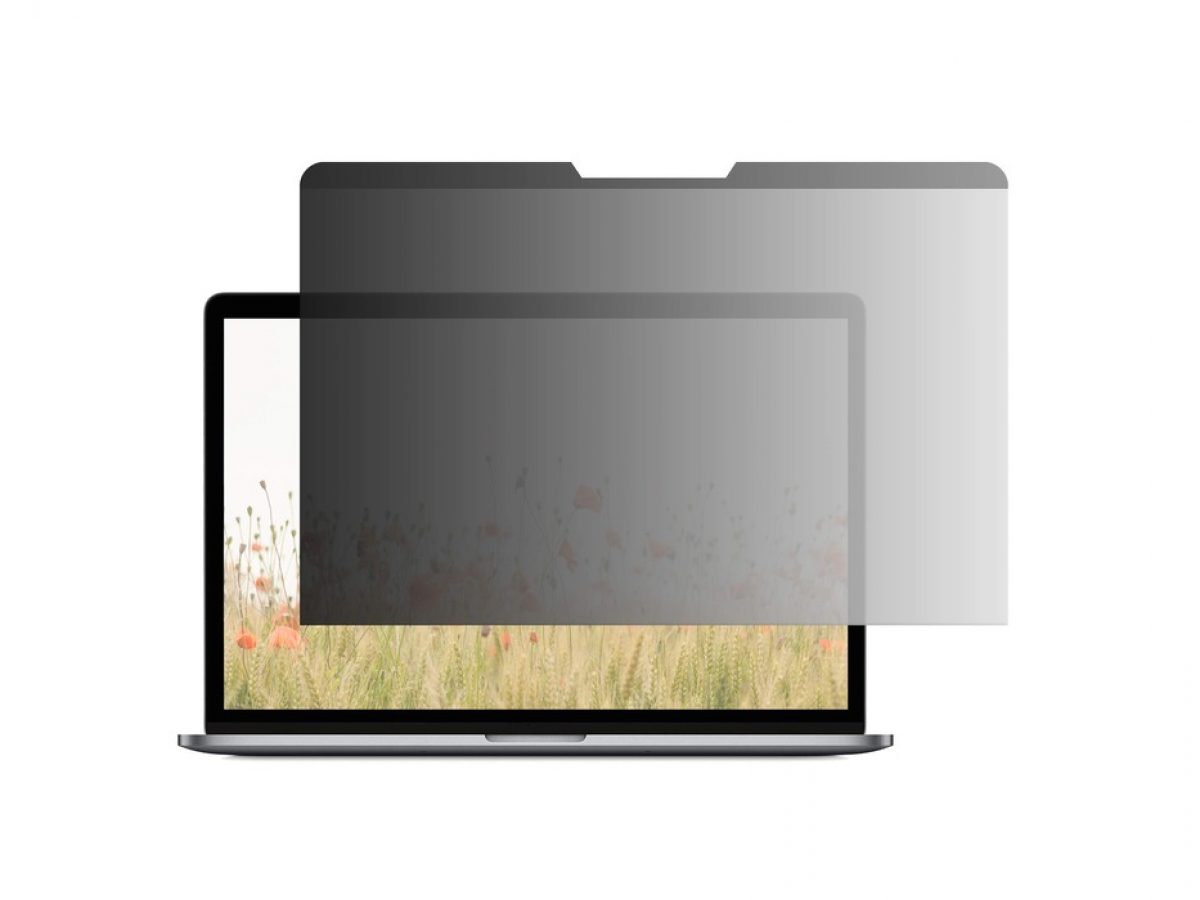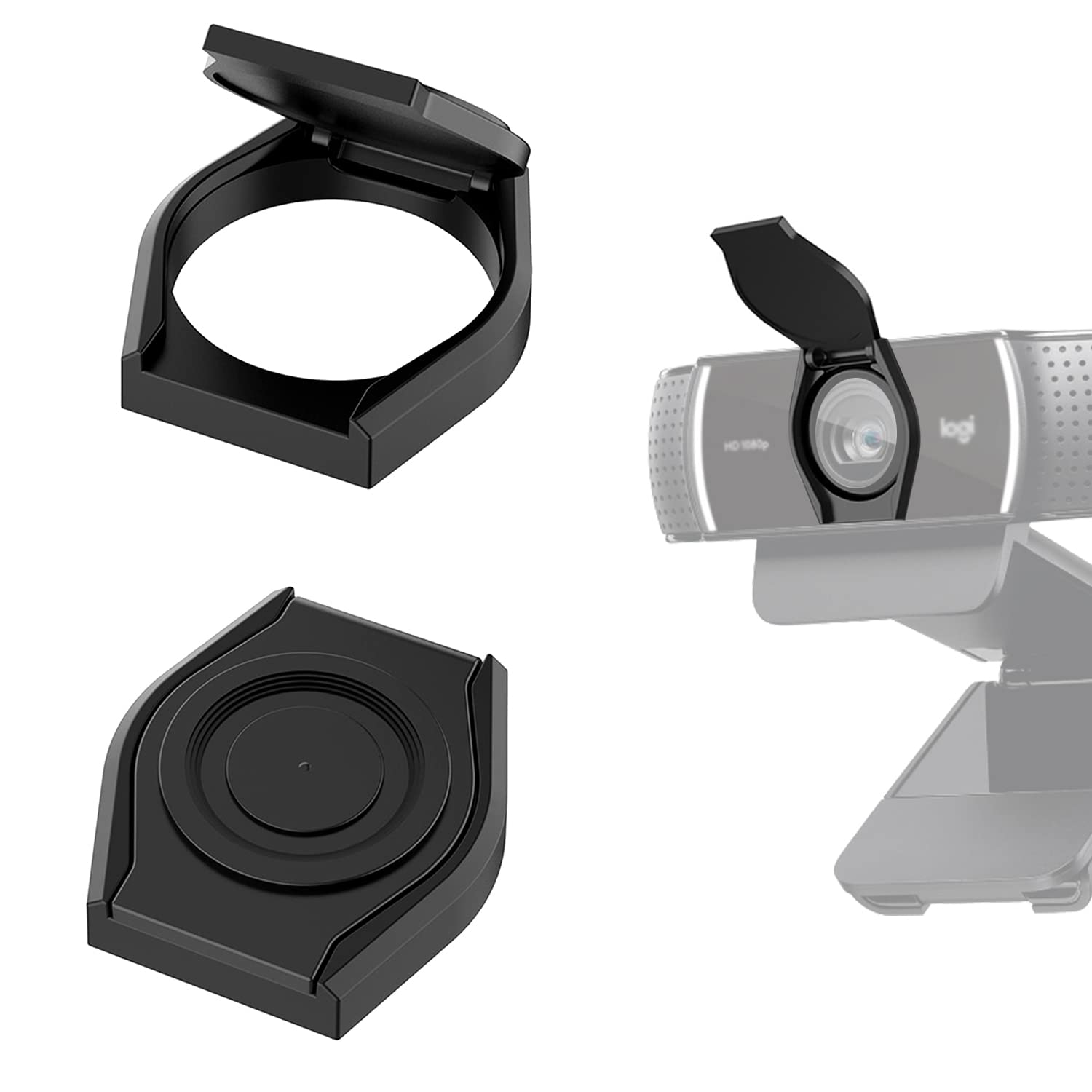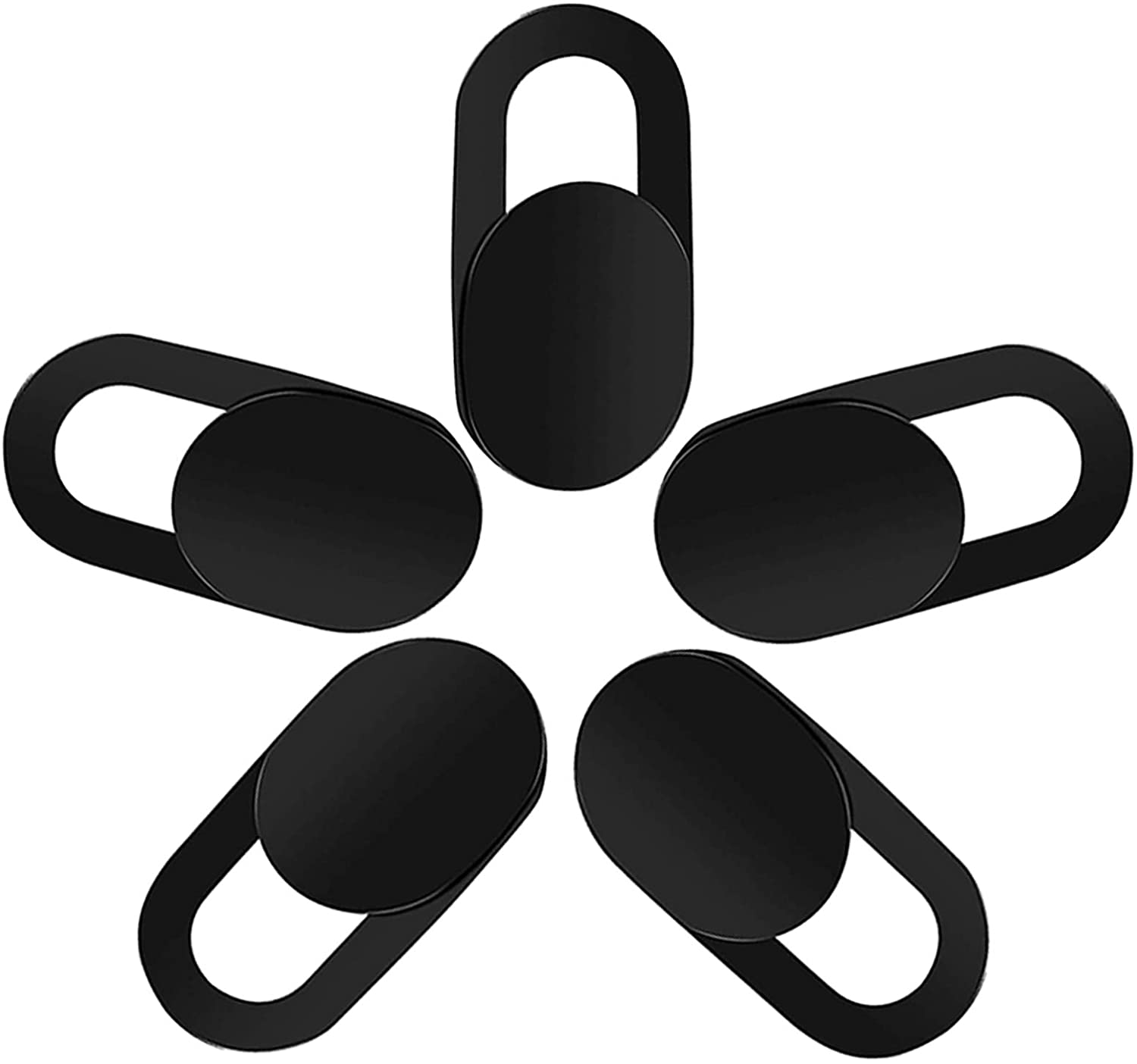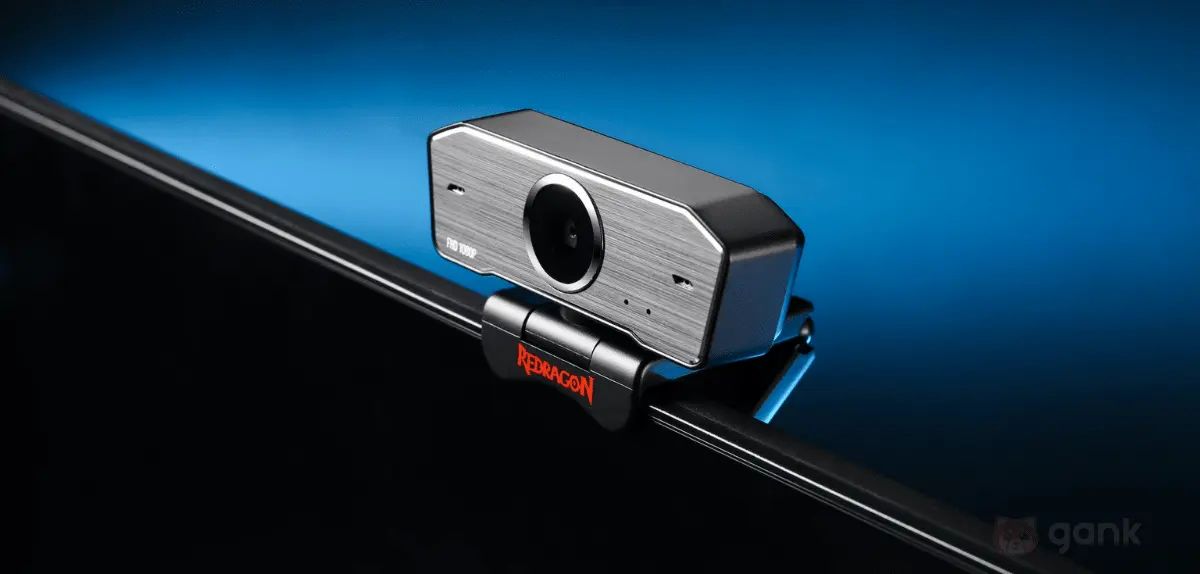Introduction
Welcome to the fascinating world of webcam hacking. In today’s digitally connected society, where technology reigns supreme, privacy and security have become paramount concerns. Webcam hacking, the unauthorized access and control of someone’s webcam, is a real threat that can have serious consequences.
Imagine a scenario where you are using your computer or smartphone, browsing the internet or chatting with friends, unaware that your webcam is being secretly accessed by an unknown individual. They have the power to watch and record everything happening in front of your camera, without your knowledge or consent. This invasion of privacy can be extremely distressing and can have significant implications for your personal and professional life.
But why would someone go to such lengths to hack a webcam? Well, there are various motivations behind webcam hacking. Some hackers are driven by voyeuristic desires, seeking to satisfy their curiosity or gain control over unsuspecting individuals. Others may have more sinister intentions, using compromised webcams to blackmail or extort victims.
Over the years, the prevalence of webcam hacking has increased, pushing individuals and organizations to take proactive measures to protect themselves. The risks and consequences of webcam hacking are far-reaching. Not only can it lead to the violation of privacy and emotional distress, but it can also expose sensitive information, facilitate identity theft, and even enable hackers to gain access to your entire system.
Fortunately, there are steps you can take to safeguard yourself against webcam hacking. In this article, we will explore the common methods used in webcam hacking and provide valuable tips on how to detect and prevent unauthorized access to your webcam. By following these precautions, you can significantly reduce the risk of becoming a victim and protect your privacy in the digital age.
What is Webcam Hacking?
Webcam hacking refers to the unauthorized access and control of a webcam, either built-in or external, without the knowledge or consent of the owner. It involves infiltrating the webcam’s system remotely and gaining access to the live video and audio feed. This breach of privacy allows hackers to monitor and record the activities taking place in front of the camera.
Webcam hacking has become a prevalent issue in today’s digital age due to the increasing accessibility of technology and the internet. Hackers can exploit vulnerabilities in software, use malware, or employ various social engineering techniques to gain control over a victim’s webcam. Once they have control, hackers can silently observe private moments, record compromising videos, or even blackmail their victims.
While the thought of someone hacking into your webcam and invading your privacy may be unsettling, it’s essential to understand that webcam hacking can happen to anyone. Even individuals who practice good cybersecurity habits and have robust antivirus software installed on their devices can fall victim to this type of attack.
Webcams are popular targets for hackers for several reasons. First, they provide a prime opportunity for voyeurism, as the camera’s lens offers a direct view into people’s personal lives. Moreover, compromised webcams can be exploited for financial gain, cyberstalking, or spreading malicious content.
It is worth noting that both built-in webcams on laptops and external webcams connected to desktop computers are vulnerable to hacking. Hackers can exploit weaknesses in the webcam’s software or firmware, gain unauthorized remote access, and take control of the device without the user’s knowledge.
To protect yourself against webcam hacking, it is crucial to be aware of the signs of an intrusion and take preventive measures. In the following sections, we will explore the risks and consequences of webcam hacking, as well as provide valuable insights on how to detect if your webcam has been hacked and steps you can take to secure your webcam.
Why Would Someone Hack a Webcam?
Webcam hacking may seem like an invasive and malicious act, but it’s essential to understand the motivations behind why someone would engage in such activities. By understanding the reasons behind webcam hacking, we can better protect ourselves and take preventive measures.
There are several motivations that drive individuals to hack webcams. One common reason is voyeurism. Hackers with voyeuristic tendencies derive pleasure or satisfaction from secretly observing others. They may hack webcams to satisfy their curiosity, invade people’s privacy, or even indulge in illegal activities such as voyeuristic pornography.
Another motive behind webcam hacking is extortion or blackmail. Once a hacker gains control of a victim’s webcam, they have the power to capture compromising videos or images. They can then use these materials as leverage to extort money or other favors from their victims, threatening to release the sensitive content to the public if their demands are not met.
Furthermore, webcam hacking can be driven by financial gain. Hackers may use compromised webcams to spy on individuals and collect valuable information that can be used for identity theft, fraud, or other illicit activities. By gaining access to personal conversations, financial transactions, or sensitive data, they can exploit individuals for their monetary gain.
In some cases, hackers may hack webcams for revenge or harassment purposes. They may have personal vendettas against specific individuals and use webcam hacking as a means to invade their privacy, embarrass them, or cause emotional distress.
Additoinally, there are instances where webcam hacking is done for political or ideological reasons. Hacktivist groups or individuals may target specific individuals or organizations to protest, expose wrongdoing, or spread a particular message.
Lastly, it’s important to note that some webcam hacking incidents may be opportunistic. Hackers may not specifically target individuals but instead exploit vulnerabilities in webcam software or gain access to unsecured networks, randomly infecting devices with malware and gaining control of webcams in the process.
Now that we understand the motivations behind webcam hacking, it’s crucial to take proactive steps to protect ourselves from falling victim to such intrusions. In the next sections, we will explore the risks and consequences of webcam hacking and provide valuable insights on how to detect if your webcam has been hacked and secure it from unauthorized access.
The Risks and Consequences of Webcam Hacking
Webcam hacking poses significant risks and can have severe consequences for the victims. Understanding these risks is crucial to grasping the importance of taking preventive measures to protect your privacy and security.
One of the immediate risks of webcam hacking is the violation of privacy. Hackers who gain access to your webcam can silently monitor and record your activities without your knowledge or consent. They can capture intimate moments, confidential conversations, or sensitive information, compromising your privacy and personal life.
Furthermore, webcam hacking can lead to emotional distress and psychological harm. Knowing that you are being watched or recorded without your consent can create feelings of fear, anxiety, and vulnerability. This invasion of privacy can have a deep impact on your mental well-being and sense of safety.
Webcam hacking also presents risks related to identity theft and fraud. Hackers who gain unauthorized access to your webcam may also access other personal information stored on your device or shared during video calls. This information can be used to impersonate you, commit financial fraud, or engage in other forms of identity-related crimes.
Moreover, compromised webcams can be exploited as a gateway to your entire system. Once hackers gain control of your webcam, they may use it as a stepping stone to gain access to other parts of your computer or network. This can lead to further unauthorized access, data breaches, or the installation of additional malware.
In addition, webcam hacking can have detrimental professional consequences. If hackers gain access to your work-related conversations or video conferences, they may obtain sensitive corporate information, trade secrets, or confidential client data. This can lead to reputational damage, loss of business opportunities, or legal implications for both individuals and organizations.
Furthermore, compromised webcams can be exploited for cyberstalking and harassment. Hackers who gain control of your webcam may use it to spy on you, gather information about your daily activities, or even track your physical location. This can create a constant sense of fear and violation, impacting your personal safety.
To mitigate the risks and consequences of webcam hacking, it is essential to take proactive steps to protect yourself. In the next sections, we will explore various methods used in webcam hacking, provide tips on how to detect if your webcam has been compromised, and offer practical steps to secure your webcam and prevent unauthorized access.
How to Protect Against Webcam Hacking
In today’s digital landscape, protecting yourself against webcam hacking is crucial to safeguard your privacy and security. By implementing strong security measures and following best practices, you can significantly reduce the risk of falling victim to webcam hacking. Here are some effective ways to protect yourself:
1. Keep your software up to date: Regularly update your operating system, antivirus software, and webcam drivers. Software updates often include security patches that address vulnerabilities, making it harder for hackers to exploit them.
2. Use reputable security software: Install and regularly update reputable security software that includes antivirus, firewall, and anti-malware protection. These tools can detect and remove any malicious software attempting to gain access to your webcam.
3. Be cautious of suspicious links and downloads: Avoid clicking on suspicious links or downloading files from untrusted sources. These can often contain malware that can compromise your webcam and other sensitive data.
4. Secure your Wi-Fi network: Use strong, unique passwords for your Wi-Fi network and enable encryption such as WPA2. This prevents unauthorized users from accessing your network and potentially compromising your webcam.
5. Cover or disconnect your webcam when not in use: Consider using physical webcam covers, such as slide covers or adhesive covers, to block the camera lens when you’re not using it. Alternatively, unplug external webcams when not in use. This ensures that even if a hacker gains access to your system, they won’t be able to see through the webcam.
6. Enable two-factor authentication: Enable two-factor authentication (2FA) for your online accounts, including those used for video conferencing or webcam-enabled applications. 2FA adds an extra layer of security by requiring a verification code in addition to your password.
7. Be cautious of phishing attempts: Be wary of emails or messages that ask for personal information or urge you to click on suspicious links. Phishing attempts can be used to trick you into unknowingly giving access to your webcam or other sensitive information.
8. Regularly scan for malware: Conduct regular scans of your devices using reputable security software to detect and remove any malware that could compromise your webcam.
9. Use strong, unique passwords: Use strong, complex passwords for all your accounts, including your webcam-enabled applications. Avoid using easily guessable or commonly used passwords.
10. Practice safe browsing habits: Be cautious of websites that may host malicious content. Stick to reputable websites and avoid clicking on suspicious ads or pop-ups.
Remember, cybersecurity is an ongoing effort, and it’s essential to remain vigilant and stay informed about the latest threats and security practices. By implementing these measures, you can significantly reduce the risk of webcam hacking and protect your privacy and security in the digital world.
Common Methods Used in Webcam Hacking
Webcam hacking can be carried out using various methods, each exploiting different vulnerabilities to gain unauthorized access to a victim’s webcam. Understanding these common methods can help you recognize potential threats and take proactive measures to protect yourself. Here are some of the most prevalent techniques used in webcam hacking:
1. Malware: Malware, such as ransomware or spyware, can be used to gain control of your webcam. Malicious software can be unknowingly downloaded through infected email attachments, malicious websites, or disguised as legitimate software.
2. Remote Access Trojans (RATs): Remote Access Trojans are malicious programs that hackers can use to gain remote access to your computer without your knowledge. Once infected, the hacker can control the webcam and monitor your activities.
3. Phishing: Phishing is a common technique where hackers attempt to trick you into providing sensitive information. They may send deceptive emails or messages that appear legitimate and prompt you to click on a link or download a file, which can lead to your webcam becoming compromised.
4. Social Engineering: Social engineering involves manipulating individuals to gain their trust and deceive them into granting access to their webcam. This can be done through fake tech support calls, impersonating a trustworthy figure, or tricking users into revealing their login credentials.
5. Weak Passwords: Weak or easily guessable passwords can be a vulnerability that hackers exploit. By guessing or cracking your password, hackers can gain unauthorized access to your device and control your webcam.
6. Unsecured Networks: Connecting to unsecured or public Wi-Fi networks can expose your device to potential attacks. Hackers can intercept data packets and gain access to your webcam as you use the network.
7. Exploiting Software Vulnerabilities: Hackers can exploit vulnerabilities in the operating system or software of your device to gain unauthorized access to your webcam. It is crucial to keep your software updated to patch any known security flaws.
8. Physical Access: In some cases, hackers may gain physical access to your device and install malware or manipulate your settings to gain control over your webcam. This can occur if your device is left unattended or if an unauthorized individual gains access to it.
Being aware of these common methods can help you stay vigilant and take appropriate precautions to protect your webcam and your privacy. By implementing security measures, regularly updating software, and practicing safe browsing habits, you can reduce the risk of falling victim to webcam hacking. In the next section, we will explore how to detect if your webcam has been hacked and take steps to secure it.
How to Detect If Your Webcam Has Been Hacked
Detecting if your webcam has been hacked is crucial to protect your privacy and take immediate action. It’s important to remain vigilant and be aware of the signs that indicate potential webcam compromise. Here are some indications that your webcam may have been hacked:
1. Unexpected LED light: If the LED light on your webcam unexpectedly turns on when you are not using it, it could be a sign of unauthorized access. However, keep in mind that some legitimate applications may also trigger the LED light.
2. Unusual noises or feedback: If you hear strange noises or audio feedback during audio or video calls, it could indicate that your webcam’s microphone has been compromised.
3. Unusual behavior: Pay attention to any unusual behavior on your computer or device, such as sudden freezes, lagging, or crashes. These could indicate that malware or unauthorized processes are running in the background.
4. Unexpected software installations: If you notice unfamiliar software or applications installed on your device, it could be a sign that your webcam has been compromised. Hackers often install malicious software to gain control over your webcam.
5. Unauthorized access: If you notice any suspicious activities on your online accounts, such as unauthorized logins or changes in account settings, it could indicate that your webcam or device has been accessed without your consent.
6. Weird cursor movements or erratic behavior: A hacked webcam may result in odd cursor movements or actions occurring on your screen. This could be due to remote control by an unauthorized individual.
7. Notifications from security software: If your security software detects any suspicious activities or alerts you about potential threats related to your webcam, it’s important to investigate further.
If you observe any of these signs, it’s crucial to take immediate action to secure your webcam and protect your privacy. Start by disconnecting your device from the internet, disabling the webcam, and running a thorough scan with up-to-date security software to remove any potential malware. Additionally, cover the camera lens or unplug an external webcam to ensure that it cannot be used to record or monitor your activities.
To prevent future hacking attempts, follow the steps outlined in the previous sections, such as keeping your software up to date, practicing safe browsing habits, using strong passwords, and securing your Wi-Fi network.
By remaining vigilant and taking prompt action if you suspect your webcam has been hacked, you can minimize the risks and protect your privacy in the digital world. In the following section, we will provide steps to secure your webcam and prevent unauthorized access.
Steps to Secure Your Webcam and Prevent Hacking
Securing your webcam is essential to protect your privacy and prevent unauthorized access. By following these steps, you can minimize the risk of webcam hacking and ensure that your webcam remains secure:
1. Keep your software updated: Regularly update your operating system, antivirus software, and webcam drivers. Software updates often include security patches that address vulnerabilities and improve the overall security of your device.
2. Use reputable security software: Install and regularly update reputable security software that includes antivirus, firewall, and anti-malware protection. These tools can help detect and prevent any malicious attempts to compromise your webcam.
3. Cover your webcam when not in use: Consider using a physical webcam cover, such as a sliding cover or adhesive cover, to block the camera lens when you’re not actively using it. This prevents unauthorized access to your webcam even if your device is compromised.
4. Disable remote access to your webcam: Check your webcam settings and ensure that remote access is disabled. This prevents hackers from gaining control of your webcam remotely.
5. Review app permissions: Go through the permissions granted to applications on your device, including those that have access to your webcam. Disable access for apps that do not require camera functionality.
6. Be cautious of phishing attempts: Be wary of emails or messages that ask for personal information or urge you to click on suspicious links. These can be attempts to trick you into granting access to your webcam or installing malware.
7. Secure your Wi-Fi network: Use strong, unique passwords for your Wi-Fi network and enable encryption such as WPA2. This helps prevent unauthorized users from accessing your network and potentially compromising your webcam.
8. Practice safe browsing habits: Be cautious of websites that may host malicious content. Stick to reputable websites and avoid clicking on suspicious ads or pop-ups.
9. Enable two-factor authentication (2FA): Enable 2FA for your online accounts, including those used for video conferencing or webcam-enabled applications. This adds an extra layer of security by requiring a verification code in addition to your password.
10. Regularly scan for malware: Conduct regular scans of your devices using reputable security software to detect and remove any malware that could compromise your webcam.
11. Physically secure your device: Keep your devices physically secure and avoid leaving them unattended in public places, as physical access to your device can pose a risk to the security of your webcam.
By implementing these steps, you can significantly enhance the security of your webcam and reduce the risk of unauthorized access or hacking. Remember to stay vigilant, regularly update your security measures, and educate yourself about the latest threats and best practices in cybersecurity. By taking these precautions, you can better protect your privacy in the digital realm.
Legal Implications of Webcam Hacking
Webcam hacking is not only an invasion of privacy but also a serious criminal offense. Engaging in webcam hacking activities can lead to severe legal consequences for the perpetrators. Understanding the legal implications of webcam hacking is vital to raising awareness and ensuring a safe digital environment for all. Here are some of the common legal implications associated with webcam hacking:
1. Violation of Privacy Laws: Webcam hacking infringes upon an individual’s right to privacy. Many countries have specific laws and regulations that protect individuals from unauthorized surveillance or the recording of private conversations. Perpetrators of webcam hacking can face charges for violating these privacy laws.
2. Identity Theft and Fraud: Webcam hacking can involve the unauthorized access and use of personal information for fraudulent purposes. This includes obtaining sensitive data, such as financial information or personal identifiers, to commit identity theft or engage in fraudulent activities. Perpetrators can face legal consequences related to identity theft and fraud.
3. Blackmail and Extortion: Hacked webcams often result in the unauthorized recording of private and intimate moments. Perpetrators may attempt to exploit this content for blackmail or extortion purposes. Engaging in such activities can lead to charges related to extortion or blackmail.
4. Unlawful Surveillance: Unauthorized access to webcams to monitor and record individuals without their consent constitutes unlawful surveillance. This includes instances where individuals are recorded in private settings or intimate situations without their knowledge. Perpetrators can face legal repercussions for engaging in such activities.
5. Computer Fraud and Abuse Act Violations: In the United States, the Computer Fraud and Abuse Act (CFAA) makes it illegal to access computers or computer systems without authorization. Webcam hacking activities that involve gaining unauthorized access to webcams or computer systems can be considered CFAA violations.
6. Wiretapping and Eavesdropping Laws: In many jurisdictions, unauthorized interception or monitoring of conversations through hacked webcams can be deemed illegal. Such actions may violate wiretapping and eavesdropping laws, which aim to protect individuals’ rights to privacy.
7. Cyberstalking and Harassment Laws: Webcam hacking can be part of a larger pattern of cyberstalking or harassment. Individuals engaged in stalking or harassing behaviors using hacked webcams can face legal consequences under cyberstalking or harassment laws.
It is important to note that the specific legal implications and penalties associated with webcam hacking may vary across jurisdictions. The severity of consequences can depend on factors such as the intent of the perpetrator, the extent of harm caused, and the applicable laws in the jurisdiction.
To ensure a safer online environment, it is crucial to report incidents of webcam hacking to the appropriate authorities. Victims of webcam hacking should also seek legal recourse to hold the perpetrators accountable and protect their rights.
By understanding the legal implications of webcam hacking, individuals and organizations can work together to strengthen cybersecurity measures, promote awareness, and contribute to a safer digital landscape for all.
Conclusion
Webcam hacking poses a significant threat to our privacy and security in today’s digital world. The unauthorized access and control of webcams can lead to a range of consequences, including violation of privacy, emotional distress, identity theft, and even financial loss. However, by being aware of the risks, understanding the common methods employed by hackers, and implementing security measures, we can protect ourselves against webcam hacking.
In this article, we have explored the various aspects of webcam hacking, including what it entails, why hackers engage in such activities, and the legal implications associated with this offense. We have also provided practical steps to secure our webcams and prevent unauthorized access, such as keeping software updated, using strong passwords, and being cautious of suspicious links or downloads.
It is essential to remain vigilant and maintain a proactive approach to cybersecurity. Regularly checking for signs of webcam compromise, such as unexpected LED lights or unusual noises, can help us detect potential hacking attempts. By promptly responding to any suspicions and taking necessary actions, such as disabling or covering our webcams, we can effectively protect our privacy.
Additionally, understanding the legal implications of webcam hacking highlights the severity of this offense and underscores the importance of reporting incidents to the appropriate authorities. By seeking legal recourse, we can hold perpetrators accountable and work towards creating a safer online environment for all.
Ultimately, protecting against webcam hacking requires a combination of technical knowledge, good security practices, and staying informed about the latest threats. By implementing the measures outlined in this article and staying vigilant, we can significantly reduce the risk of falling victim to webcam hacking and enjoy a safer digital experience.







